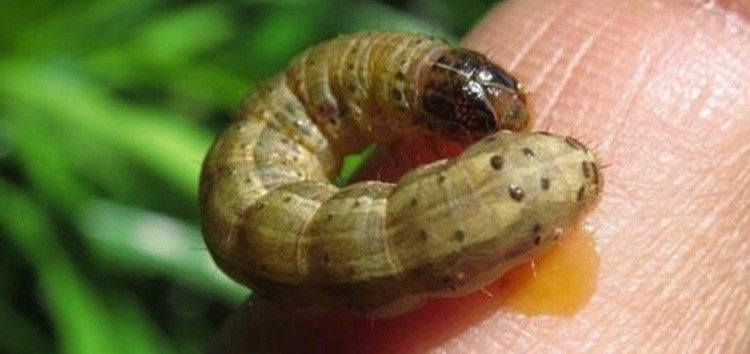By Tamar Valdman, on behalf of Saillog
Fall armyworm (Spodoptera frugiperda) is not your typical caterpillar-moth species. Fall armyworm is an invasive pest that affects over 80 plants, such as maize (corn), and can cause more than $13 billion in agricultural losses. In the United States, the pest was first reported as early as 1797. Around the 1970s, the U.S. reported losses between $32-$138 million annually. Farmers in Western countries can afford to use the latest high quality pesticides, while those in low income nations have limited access to pesticides that are up to the job. Thus, the 2016 fall armyworm outbreak in Africa, which began in West and Central Africa, has since been deemed a humanitarian crisis. Currently, agriculture experts estimate fall armyworm may cause yield losses between $2.4-$6.2 billion per year in Africa. Maize is a major staple crop and over 200 million people depend on it for food security. Therefore, regional and international organizations and governments are collaborating on effective pest management approaches.
The United States Agency for International Development (USAID)’s Feed the Future, Land O’Lakes International Development, and the Foundation for Food and Agriculture Researched teamed up to create a Fall Armyworm Tech Prize. The competition offers twenty selected startups that focus on digital solutions for identifying, treating, and tracking fall armyworm in Africa a chance to win one of five prizes. Saillog, a Farming First supporter that is dedicated to sustainable agriculture, was one of twenty startups chosen to participate in the Fall Armyworm Tech Prize.
Saillog leverages computer vision and artificial intelligence algorithms for plant protection management, offering a smartphone app called Agrio that uses image recognition algorithms to diagnose hundreds of crop diseases, pests, and nutritional deficiencies. Agrio supports 11 languages, has over 50,000 downloads worldwide, and is rated in the top 100 best educational apps in seven countries. Nvidia, a global leader in artificial intelligence, stated Saillog’s algorithms have, “superb accuracy” and Forbes recently called Saillog’s team, “Food Waste Fighters”.
Saillog’s algorithms are being trained to specialize in identifying fall armyworm. It was a right place, right time type of situation when farmers in India uploaded images of fall armyworm to Agrio and the algorithms identified the pest. Through mid-July, Saillog’s artificially intelligent global alert system, called AgrioShield, sent warning notifications to the smartphones of farmers in high risk zones; hundreds of farmers received suggested preventative protocols written by Saillog’s agriculture specialists. On Monday, July 30, 2018, the Indian Council of Agriculture Research-National Bureau of Agriculture Insect Resources announced Dr. A.N. Shylesha and his team recorded fall armyworm on maize in the Chikkaballapur district in Karnataka state, India. Due to fall armyworms’ high mobility, international organizations such as the Food and Agriculture Organization of the United Nations (FAO) suspected the pest would spread to Asia, though until last month there were no confirmed cases.

“We are witnessing an intersection of advances in technology and the potential for efficacious containment of outbreaks. We experienced a similar situation in India when we were at the forefront of tracking the spread of chilli leaf curl virus”, said Dr. Nessi Benishti, the CEO and Founder of Saillog.
“There are no treatments for crop viruses. Prevention and early detection are critical factors in containing the spread. Image-based artificial intelligent systems like Agrio are important tools in agriculture. We are seeing an increase in the spread of diseases and pests globally, such as with the fall armyworm. We are at a point in time when information is easily accessible and communication between individuals is heightened. We once had a case where an individual growing crops in his living room in Fiji uploaded images of diseased potatoes, and a Professor in the United States who happened to specialize in potatoes helped him cure the disease. It is these occurrences, and ones like detecting foreign species early, that depict the impact of our technology”, said Dr. Benishti.



